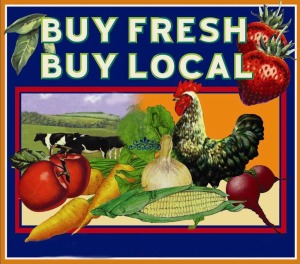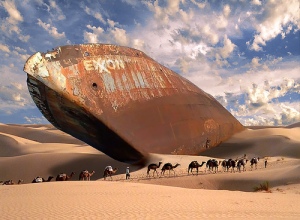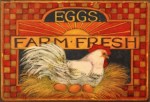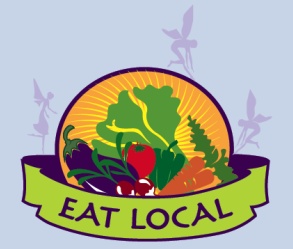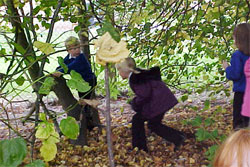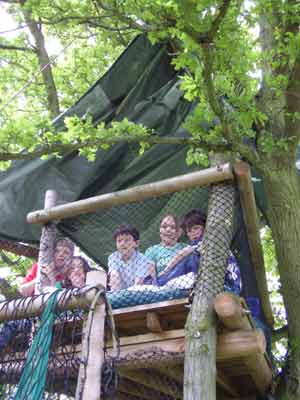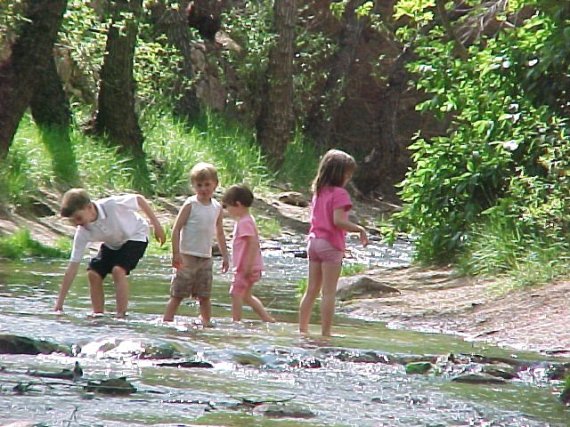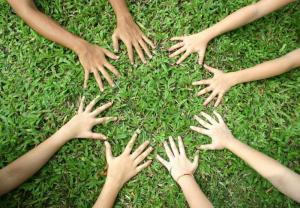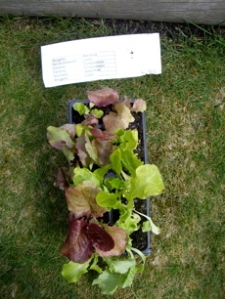I’ve recently finished reading Why Your World is About to Get a Whole Lot Smaller. The author, Jeff Rubin, is a former Chief Economist at a major Canadian bank and an expert in the global economics of oil. In his book, he provides convincing evidence that the price of oil (and therefore gasoline, diesel, etc) is going to continue to climb over the next few years because of growing demand and decreasing supply. Now I’ve heard of peak oil and I’ve read everything from “technology will save us” to “get ready for the Apocolypse” but my own position had been somewhat undecided. Until now. In this article I will bring up some of the points raised in the book, and add my own musings on what this may all mean.
I really liked the way Rubin explained the problem, simply and clearly, in a way that is easy to follow and very thorough. He deals with the usual criticisms of peak oil and dismisses them with facts – not from the musings of obscure academic journals, but basic statistics from sources well-recognized by any reader. By the end of the first half of the book, I’m convinced that oil is going to continue its upward climb. And it is going to significantly change the way we live.
Despite what some Internet sources will have you believe, Rubin argues that these changes aren’t going to happen overnight; it’s not going to be like the disaster movies where one day a resource just disappears and everybody goes Mad Max trying to secure enough for themselves and their families. Oil prices flow through a predictable cycle of ups and downs (though with an ever-increasing upward trend), so we will have time to adjust to the rising prices of oil – not time enough some may argue, but enough that one isn’t going to go to sleep with gas at $1.20/L and wake up to $5.00/L. Think about how quickly the Big Box store appeared in cities and towns everywhere – they weren’t deposited there by a freak storm, but to many of us it did seem like it all happened rather fast. That’s the sort of speed we’re talking about here.
 Rubin’s first predication is that manufacturing will return to North America and become an increasingly local industry. It’s hard to argue with the logic behind this: at some critical price for fuel, the low wages and manufacturing costs of overseas plants will no longer be enough to provide an economic advantage due to the great distances over which these products must be shipped. (Just one example of the ridiculous extent to which cheap oil has shaped things: in my home province of BC we harvest wood, which is then shipped to China and other countries to be milled and processed, and then shipped back to Canada for export). I can imagine many out-of-work tradespeople who will welcome this new world – although I do hope we can rebuild our industries with a great deal more concern and respect for the environment than we had in the former glory days.
Rubin’s first predication is that manufacturing will return to North America and become an increasingly local industry. It’s hard to argue with the logic behind this: at some critical price for fuel, the low wages and manufacturing costs of overseas plants will no longer be enough to provide an economic advantage due to the great distances over which these products must be shipped. (Just one example of the ridiculous extent to which cheap oil has shaped things: in my home province of BC we harvest wood, which is then shipped to China and other countries to be milled and processed, and then shipped back to Canada for export). I can imagine many out-of-work tradespeople who will welcome this new world – although I do hope we can rebuild our industries with a great deal more concern and respect for the environment than we had in the former glory days.
 Another prediction made in the book is an end to the suburbs. The current version of “suburb” leaves a lot to be desired, and I might not be the only one to cheer the end of its current incarnation. Suburbs are a product of cheap fuel that people are all too willing to burn in exchange for perfect lawns, air-conditioning oversized houses, and hour-plus commutes in the private vehicle. Not to mention conformity to homeowner association rules that outlaw backyard poultry and hanging laundry as garish descents into peasantry that will lower property values (do members of these associations get how snobbish and elitist such rules are?). At a certain price for gas, people will not only shun the suburbs as a bedroom community, but my guess is that such real estate will be hard to even give away. We in Canada may witness scenes like those from the US showing entire housing developments abandoned mid-construction.
Another prediction made in the book is an end to the suburbs. The current version of “suburb” leaves a lot to be desired, and I might not be the only one to cheer the end of its current incarnation. Suburbs are a product of cheap fuel that people are all too willing to burn in exchange for perfect lawns, air-conditioning oversized houses, and hour-plus commutes in the private vehicle. Not to mention conformity to homeowner association rules that outlaw backyard poultry and hanging laundry as garish descents into peasantry that will lower property values (do members of these associations get how snobbish and elitist such rules are?). At a certain price for gas, people will not only shun the suburbs as a bedroom community, but my guess is that such real estate will be hard to even give away. We in Canada may witness scenes like those from the US showing entire housing developments abandoned mid-construction.
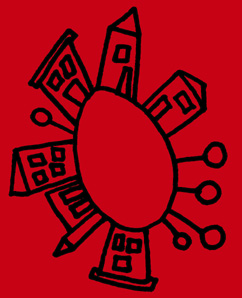 On the bright side, however, not all suburbs will become ghost towns. Those whose municipal councils can look ahead to a new future will be successful in turning their bedroom communities into thriving, self-contained villages where the residents can work, play, and buy what they need locally. I’ve often thought that, while large cities have their wonders and treasures, there is something lost when human beings live in groups of such high numbers. We aren’t designed to do so, and it seems to lead to the “elevator syndrome” where people stand in close proximity without ever looking at or talking to each other. In smaller communities you know your neighbour. Sure, you may have only one pet food store to choose from – but because of that they know you on a first name basis, and will front you the $5 for kibble when you realize you left your wallet at home. And if someone passes by Old Lady Smith lying on the sidewalk they’ll immediately know that she’s suffered another seizure and the ambulance will be sent for, rather than assuming she’s some old homeless drunk/addict sleeping off a hangover. I hope what we’ll end up with is all the health and value of a small community but – thanks to the Internet* – with a global awareness. Think “Middle Ages”, but without the isolation and lack of information-sharing that kept people ignorant.
On the bright side, however, not all suburbs will become ghost towns. Those whose municipal councils can look ahead to a new future will be successful in turning their bedroom communities into thriving, self-contained villages where the residents can work, play, and buy what they need locally. I’ve often thought that, while large cities have their wonders and treasures, there is something lost when human beings live in groups of such high numbers. We aren’t designed to do so, and it seems to lead to the “elevator syndrome” where people stand in close proximity without ever looking at or talking to each other. In smaller communities you know your neighbour. Sure, you may have only one pet food store to choose from – but because of that they know you on a first name basis, and will front you the $5 for kibble when you realize you left your wallet at home. And if someone passes by Old Lady Smith lying on the sidewalk they’ll immediately know that she’s suffered another seizure and the ambulance will be sent for, rather than assuming she’s some old homeless drunk/addict sleeping off a hangover. I hope what we’ll end up with is all the health and value of a small community but – thanks to the Internet* – with a global awareness. Think “Middle Ages”, but without the isolation and lack of information-sharing that kept people ignorant.
The transformation to smaller hubs will provide greater diversity in our products and foods. A piece of Ikea furniture is the same whether bought at a Vancouver store or one in Ottawa. But perhaps in the near future one will live in a community with a characteristic style of furniture, hand-crafted by local artisans from locally harvested or salvaged wood. Rather than travelling to a foreign country, one may only need to visit a neighbouring town to find a different style, using different woods and with a different flair for utility. On our small-ish Island we have many unique microclimates that are capable of specializing in different plant foods, and I can foresee a local economy where seafood from the West Coast is traded for fruits and honey from the Valley, for example.
It is these aspects of the post-peak oil world that really appeal to me, probably because I live in an area where community spirit is already high, where local food and art flourishes, and where self-sufficiency has been a goal for some time. I love that I can grow my own food, and that what I can’t grow myself can be obtained from my neighbours. Sea salt, tea, honey, flour, milk, and eggs are just some of the foodstuffs we buy locally. Local food will become much more desirable when the cost of food transportation breaks the bottom line. And I will join in the chorus of Hallelujah’s to witness the slow death of industrial farming and its oil-hungry monocropping culture of maximum yield at all cost. I will similarly raise a cheer for the passage into extinction of cheap, plastic, useless crap that falls apart quickly and is not worth repairing.
Rubin’s book doesn’t paint it all as a rosy picture, however. He notes that millions of people will suffer as we make the transition from global to local economies. There will be a Grand Reshuffling, and it will hurt many. Those in the developing world who have been robbed of their farming traditions and cultural stores of knowledge by foreign “aid” that has rendered them dependent on crops that don’t grow locally without huge inputs of fuel-dependent resources (see Raj Patel’s Stuffed and Starved), are particularly going to suffer. I also wonder about the future of the MegaTropolis. Places like New York and Tokyo with their populations of millions living in concrete jungles and not enough green space to grow food. I imagine we’ll see some great historic reversal where, instead of peasants fleeing to the cities, cities will be abandoned as flocks of people move out to the country. Not such a bad idea from where I sit, though there is much culturally to admire and cherish when it comes to the world’s great cities. Some places will have a hard time of this, but countries like Canada, where we have vast tracts of uninhabited land, will likely do well.
There’s no doubt that the transition to a world without cheap oil (for there will always be oil, it will just be too expensive for most of its current uses) will be a difficult one for many. Each of us must look to our own situation to determine how much we have placed ourselves at risk, and what we should do about it in the few years we have left before driving a car moves from necessity to expensive luxury. Are you able to grow at least some of your own food, with enough extra to barter for other necessities? Are you a slave to your mortgage? Can you weather significant increases in interest rates, can you survive on far less an income than you currently enjoy? Has your municipal or district council put forward resolutions to increase self-sustainability and decrease dependence on cheap oil? What are the transportation options in your community? All of us must think about these things as the price of oil continues its inexorable climb upwards. Because one thing seems certain: cheap oil is soon to be a thing of the past.
* it is reasonable to argue that peak oil would affect electricity as well as the manufacture of computer devices, and that the Internet may become as outpriced as driving a vehicle; I would not hesitate in giving up pretty much every other oil-based system we rely on if it meant keeping the Internet and I’m certain many other people assign the same importance to it, especially in a world where old skills will need to be relearned, so I remain optimistic that the Internet is here to stay

